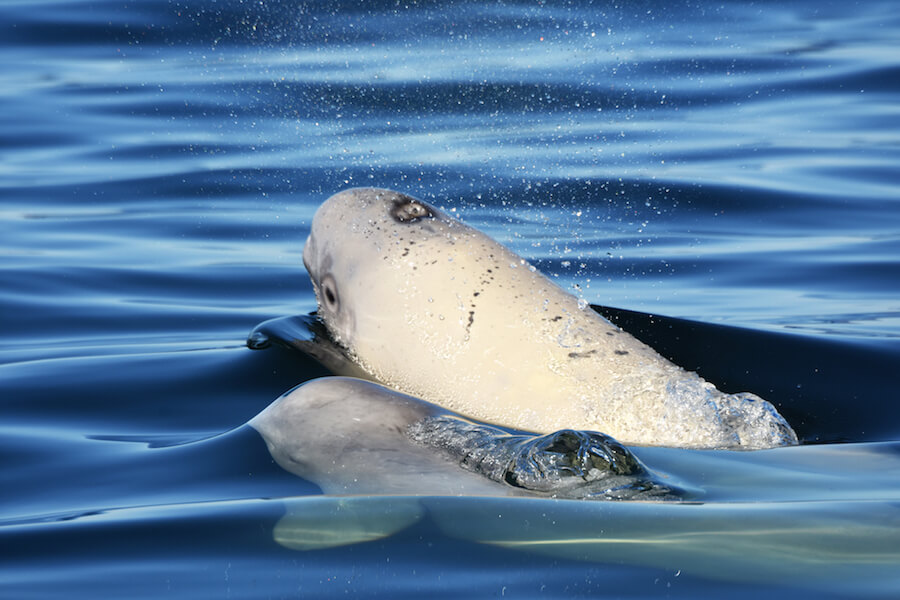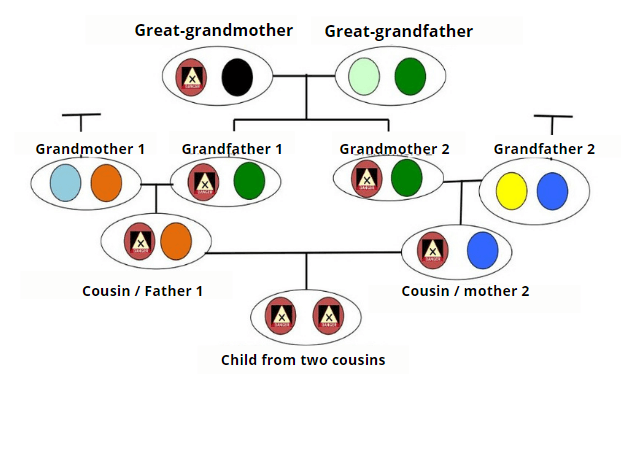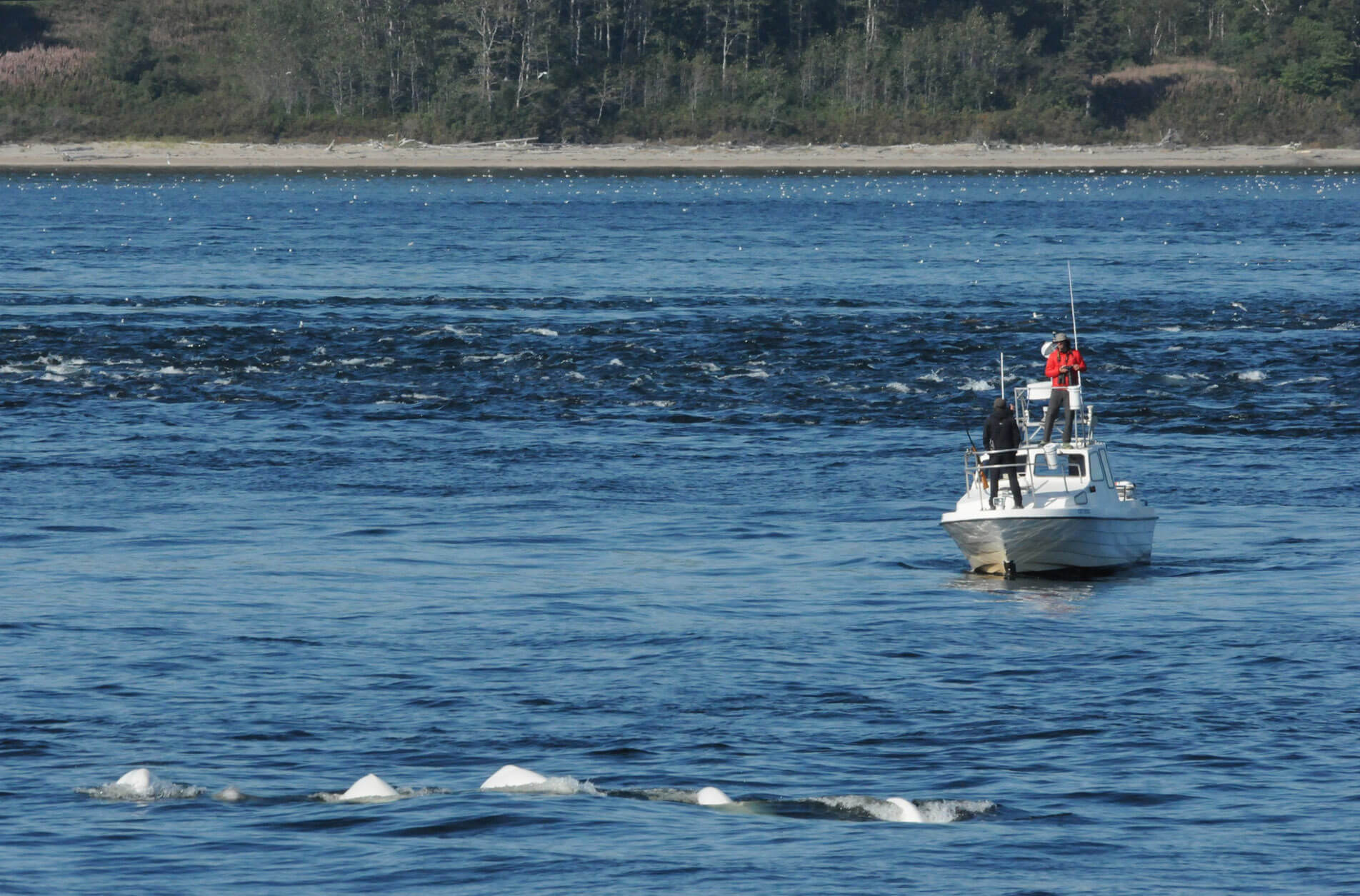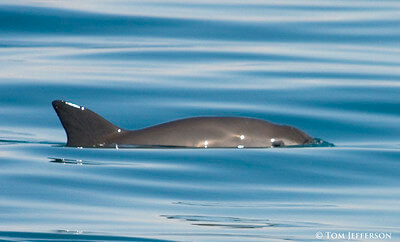There are believed to be around 360 North Atlantic right whales left in the world, and probably fewer than a dozen vaquita, all of which reside in the Gulf of Mexico. The St. Lawrence beluga, on the other hand, represents an isolated population estimated to number approximately 1,000 individuals.
These extremely low figures beg the question of the risks of inbreeding in cetaceans, and to what extent such a threat affects small populations like that of the St. Lawrence beluga.
Harmful effects of inbreeding
Inbreeding, also known as consanguinity, is defined as when individuals with common ancestors reproduce with each other. If such inbreeding may seem harmless, it can have significant consequences at the genetic level.
“There are two main problems with inbreeding,” explains Timothy Fraser, a biologist at Saint Mary’s University in Halifax. “On one hand, it can expose recessive alleles –which are usually hidden in the population – to negative effects.” For example, some diseases or deformities will only appear when an allele [i.e. a variation of a gene] is inherited from both the father and the mother. This pairing, which is rare in the general population, is suddenly much more likely to occur if the parents have a similar genetic background.
“On the other hand,” continues the researcher, “inbreeding lowers the genetic diversity of the population. Due to this loss of diversity, the species will be less able to adapt to environmental changes, for example.” Indeed, the “library” of possibilities contained in the genetic heritage in terms of morphological, physiological or behavioural changes will be considerably reduced.
Thus, within a given population, inbreeding can result in the birth of unhealthy individuals, a generally lower state of health of individuals, shorter life expectancies, greater sensitivity to pathogens (viruses, bacteria), or even reduced reproductive success.
A question of population size
In light of the risk it represents, inbreeding is generally limited in its natural state by behavioural mechanisms, dispersal of young or attraction to a partner genetically distant from oneself, or even, in the case of humans, norms created by society.
Unfortunately, when a population becomes very small or very isolated, these mechanisms are no longer sufficient to prevent the mating of individuals that share a common lineage. However, the risk increases as the population decreases, a phenomenon geneticists call “ extinction vortex”.
However, there is no minimum number of individuals below which there is an inbreeding problem,” points out Timothy Frasier. In fact, different populations are able to withstand different degrees of inbreeding, depending on a number of factors.” Some populations that already have low genetic variability may be less affected by inbreeding (see example of vaquita, below).
It is therefore not easy to determine to what extent a species or population is affected by inbreeding problems! “To do so, you need to combine genetic and field data to determine whether there is a link between inbreeding rates and individual health, reproduction, and/or survival within the population,” explains Tim Frasier. He is currently trying to assess the rate of inbreeding present in North Atlantic right whales and the consequences for this highly endangered population.
Is the St. Lawrence beluga threatened by inbreeding?
An initial study carried out in 1994 had shown that St. Lawrence belugas showed lower genetic variability than their cousins in the Beaufort Sea. And in 2003, a second study confirmed that the genetic diversity of this population was lower than that of other Canadian populations.. Lastly, according to an article published in 2002, the St. Lawrence beluga seems to be showing signs of genetic impoverishment at the MHC (major histocompatibility complex) level, genetic areas known to play an important role in immunity. But should we be alarmed?
At the present time, the St. Lawrence beluga recovery strategy established in 2012 by Fisheries and Oceans Canada (DFO) does not list inbreeding as a priority threat for this population.
As lead biologist for DFO’s program Charline Le Mer explains: “Given the considerable difficulty of assessing the true risk of this threat on the recovery of the St. Lawrence beluga, genetic diversity as well as inbreeding and mortality by natural predation and ice had instead been lumped together in the limiting factors for the recovery strategy.”
“Personally, I think it’s a concern that should be on our radar,” says Tim Frasier. “It may not be the main problem that St. Lawrence belugas are facing right now, but inbreeding may play a role in the population’s struggle to recover. The consequences can be direct or indirect, and can accumulate with other issues. For example, inbreeding may make individuals more susceptible to contaminants or pathogens, or contribute to a decrease in reproductive success.” But to verify these hypotheses, additional data would be needed to determine whether or not there is a correlation between reproductive success and genetic variability.
Coloured inset: Vaquita immune?
With an estimated population of just 10 to 20 individuals, the vaquita is critically endangered. However, according to a recent study, this species is not believed to be threatened by inbreeding issues, despite the small size of its population. The authors of this study point out that the species survived for thousands of years in small numbers in an isolated area (the Gulf of California), which would have given it time to rid itself of deleterious genes by natural selection, thanks to to a hypothetic mechanism of “genetic purging”.
Scientific literature thus mentions several species that naturally show low genetic diversity or a high rate of inbreeding, such as the cheetah or the narwhal. While at the present time this does not seem to compromise their life expectancy or their ability to reproduce, this lack of diversity could nevertheless have an impact on their ability to adapt to changes in their environment.









